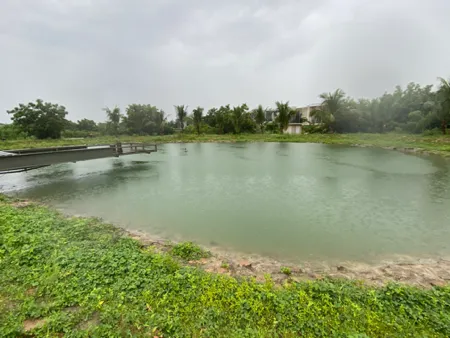 Contact us
Contact usIntent
Community
Studio Organo Concepts
About Us
Subsidaries
Studio Organo
TS RERA No.P02400003403.
TS RERA No.P02400003403.

Water conservation must be collective action
At Naandi, one of the goals was to create a water-balanced community. This means that the annual water consumption must be less than the total yearly rainfall falling on the community. The other associated goal was to ensure all water that falls on the site either gets stored or is sent underground to recharge deep aquifers.
To achieve this, various techniques such as trenches, contour trenches, bio-swales, recharge/injection bore wells, bore chargers, percolation pits and other systems.

We have seen the water level in the borewells rise for the first two years because of these efforts. But in the past few years, it started to decline again. We realized that land developments and activities happening in the surrounding are as significantly impact groundwater availability. No matter how reasonable our efforts are to improve the groundwater table, the deciding factor is how responsibly or irresponsibly groundwater is used in the surrounding areas. The best possible alternative is to store rainwater as much as possible for the community's water security.

Storing water in large ponds
Although storing water is the best alternative, are ponds with a large surface area a good idea?
One of the rain waters harvesting structures at Naandi was the central pond. Although it looks beautiful, the effectiveness is not as great as we have anticipated.

The pond would be empty half the time, especially during the summer months, due to the dry climate ruining even its visual appeal.
There was a lot of effort to make this pond, be it the scientific analysis or research or studies. But evaporation losses are directly related to the amount of exposed surface area. And this pond was wider than it was deep, which meant a lot of evaporation loss.
A better strategy would have been to dig deeper and restrict the amount of exposed surface area and/or cover it with solar panels to reduce evaporation losses.
